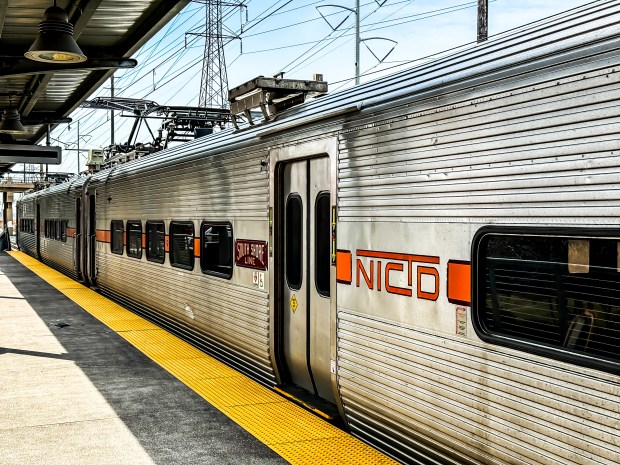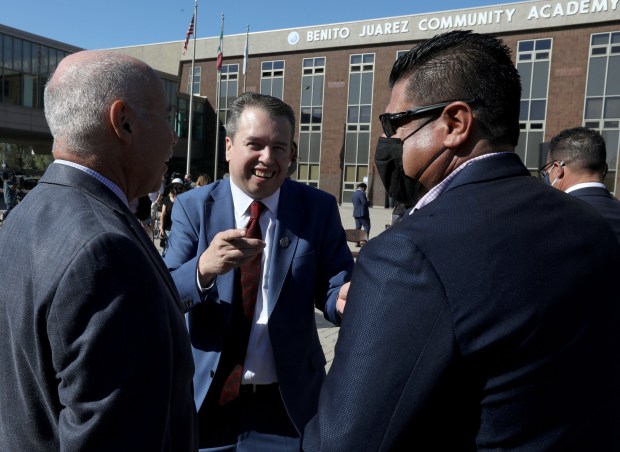The South Shore Line is wrapping up work on the $950 million West Lake Corridor project. The $650 million Double Track NWI project to add capacity along the traditional east-west Shoreline route is done. The $200 million project to add another line from 18th Street to Millennium Station in Chicago is well underway.
That checks off just about everything in the railroad’s current strategic plan, said Michael Noland, president and general manager of the Northern Indiana Commuter Transportation District, which runs the South Shore Line.
What’s next? What’s the vision for the next 20 years?
A strategic plan is being developed to answer those questions. That process began in September.
The West Lake Corridor project was always meant to be a phased project, Noland said.
When service along the north-south route begins sometime next year – he hopes for spring but it could be as late as fall – the trains will stop in Dyer as a “kiss and ride” station. The plan all along has been to send trains as far south as Cedar Lake. That could happen.
During early discussions for the West Lake Corridor route, boosters were hopeful that the trains could go to Valparaiso, too. A feasibility study said there wasn’t enough population yet to justify federal funding for the route.
LaPorte Mayor Tom Dermody has expressed interest in the South Shore Line building a spur to his city, too, Noland said.
A big South Bend project is possible, too. The first would be rerouting trains to serve the west side of the South Bend airport instead of the east side.
After the airport project is done, the railroad could potentially push into downtown South Bend. Some civic boosters there want to see passenger service downtown. The strategic plan could take that into account, too.
On Monday, the NICTD board approved an agreement with the South Bend airport board to move the railroad’s station to the west side of the airport.
It was 33 years ago that the South Shore Line served the east side of the airport on a temporary basis. “Temporary has a meaning in the railroad history and is now defined as at least 33 years,” Noland said.
“We’ve been negotiating with the airport for just short of three years,” Noland said.
The new agreement allows the railroad to acquire an easement into the airport on the west side and has a separate provision for space within the airport terminal to house railroad passengers.
“I’m here to recommend to the board that we move forward with this agreement and leverage whatever remaining opportunity there is left to go after federal capital dollars to get the airport funded,” Noland told the railroad’s board. There’s still money left in the pot of money approved under the bipartisan infrastructure law and the current Surface Transportation Act, he said.
“We can’t wait anymore. We’re going to fund this project. Now is the time to go after those federal dollars, to establish the local funding source and move this project forward,” he said.
Noland isn’t sure where the local share of the $112 million project will come from. He said being competitive in the grant process means coming up with $56 million in local funding. He’s ready to approach the state, St. Joseph County, South Bend and others to come up with that local commitment. “I’ll have a bake sale if I need to,” he said.
Moving the rail line will need to be approved by the Federal Aviation Administration.
Because the railroad is buying an easement to access the airport, its annual payment to service the airport will drop from $75,000 to $25,000. That fee can be adjusted according to fair market rates, according to the agreement, with the railroad paying 20% of the lowest rate charged to an airport customer. “They won’t indiscriminately raise our rates,” Noland said.
The fee to riders for using the parking lot at the airport will increase for the first time in 33 years, from the existing $1 for 18 hours.
The agreement also can be canceled by the airport if the railroad’s usage drops below 14 trains per week. “We operate 84 trains a week now with more service coming, so it’s a really low threshold,” Noland said.
“This has been an arduous journey over the last 33 months,” NICTD board member Carl Baxmeyer said. He’s St. Joseph County’s representative. The key is that the railroad retained the right to be at the airport, he said.
Jim Arnold, LaPorte County’s representative on NICTD’s board, also sat in on negotiations. “I’ve never seen so many intricate details of a minor nature play into a major contract like they did at the airport,” he said. “This is this is just a milestone for NICTD,” he said.
Doug Ross is a freelance reporter for the Post-Tribune.




